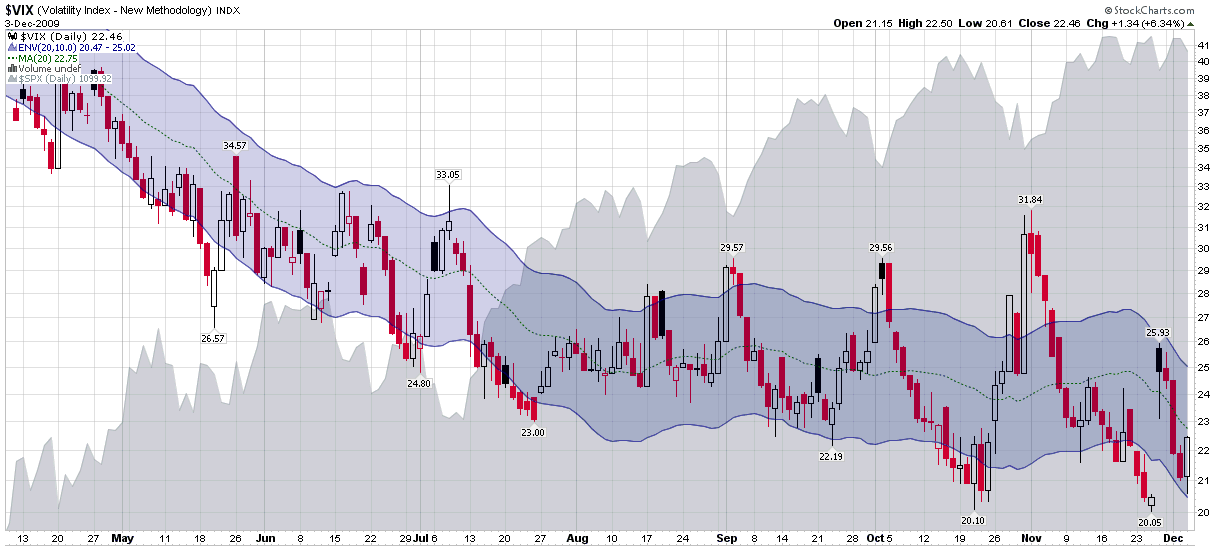As the chart below shows, the last two times the VIX has taken a run at 20 (late October and late November), stocks have responded by selling off and spiking volatility. It is possible that a VIX of 20 may still be something that investors are not yet ready to accept (availability bias), but with historical volatility hovering around 16 and the long-term trend in the VIX still moving downward, it is likely just a matter of time before we see a VIX in the 19s.
In addition to the absolute levels of the VIX, one must always watch relative VIX levels, which is where the moving average envelopes come in. Displayed as a blue zone in the middle of the trading range on the chart, the 10 day simple moving average envelopes make it easy to identify when the VIX is extended to the high side or the low side. While the 20 level has been well out of the moving average envelopes for the last two drops in the VIX, that is not likely to be the case going forward. This sets the possibility of a battle between the absolute VIX (support at 20) vs. the relative VIX (support at the bottom of the envelope) in the near future, with an increased likelihood that the 20 level does not hold the next time around.
Finally, it is that time of year where I feel compelled to remind everyone that seasonal factors also indicate that volatility should be moving lower. I have discussed the holiday effect several times in the past in this space and essentially the historical pattern calls for the VIX to hold relatively steady for the first two weeks of December, then drop sharply (probably about 1.5 points at current levels) as Christmas approaches.
For more on these subjects, readers are encouraged to check out:

[source: StockCharts]
Disclosure: none